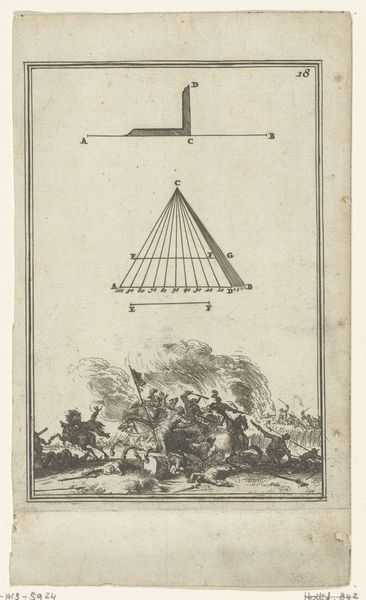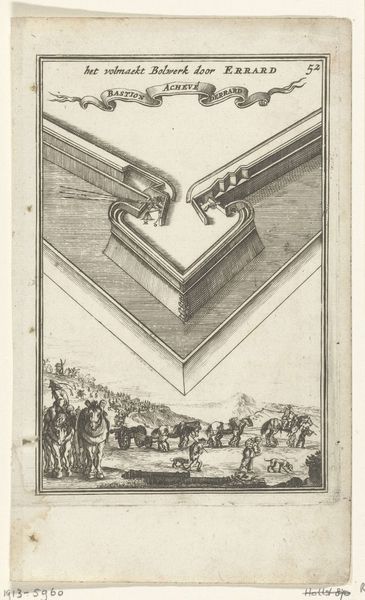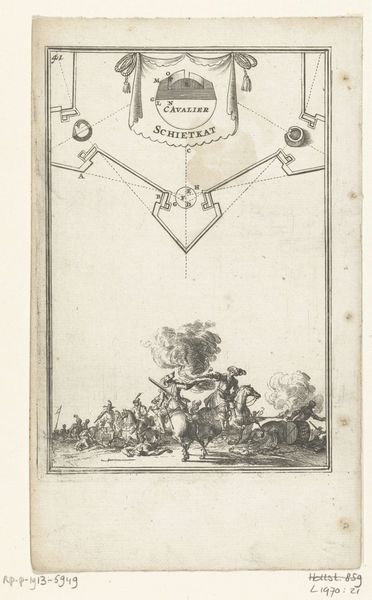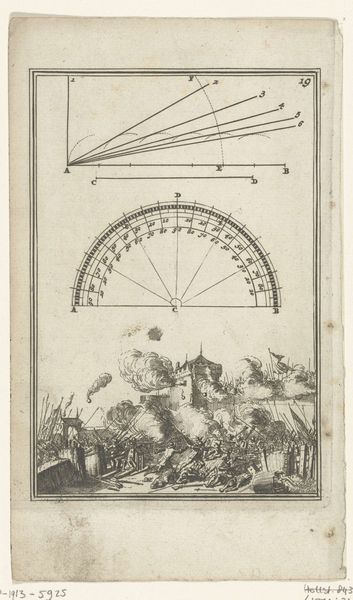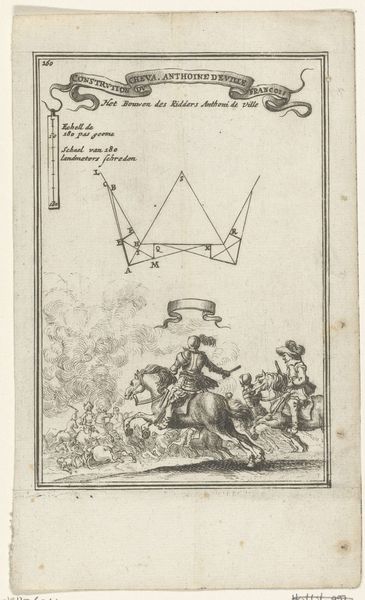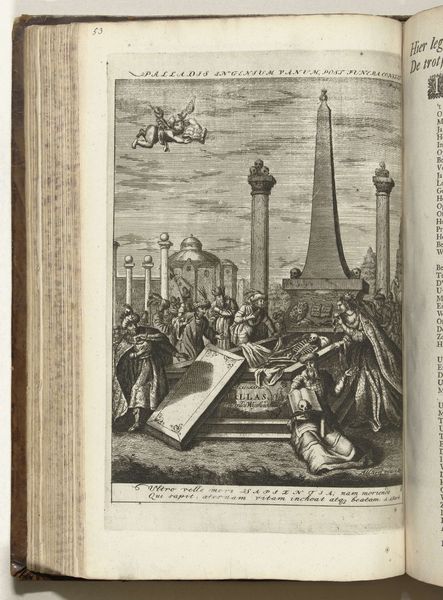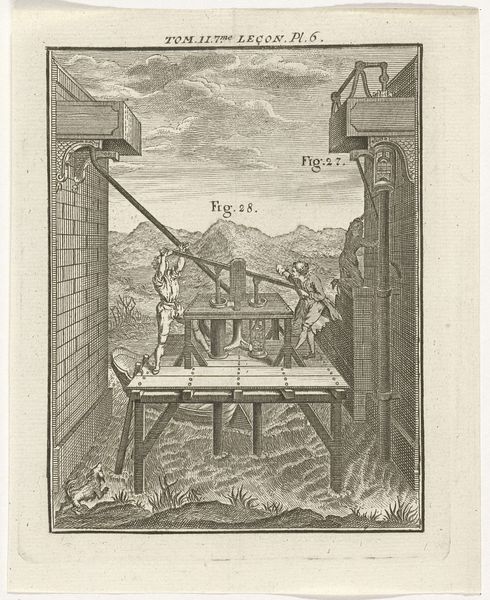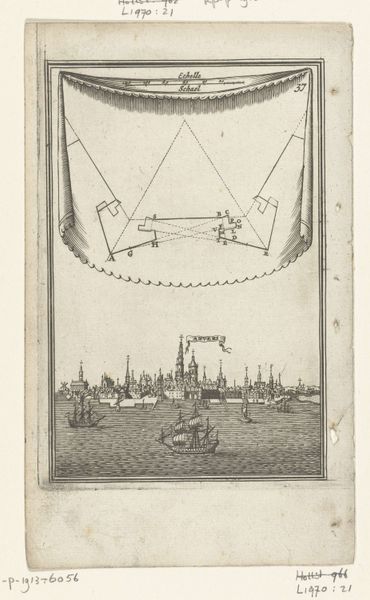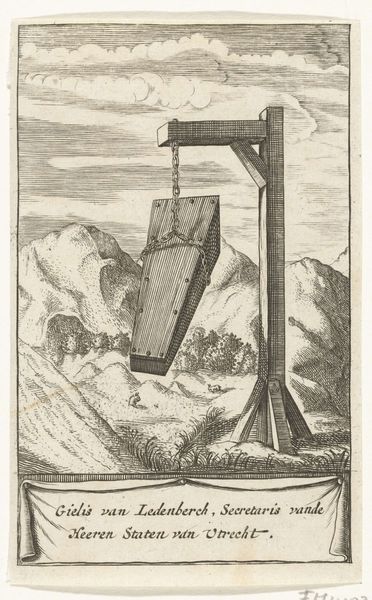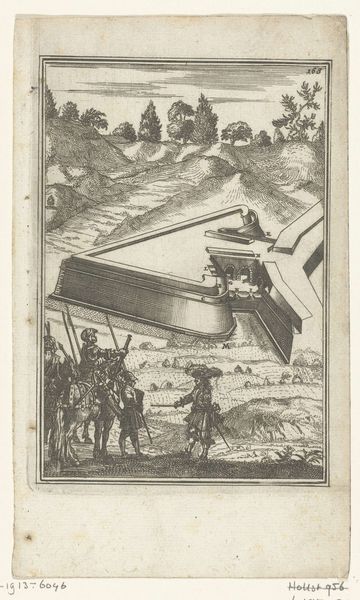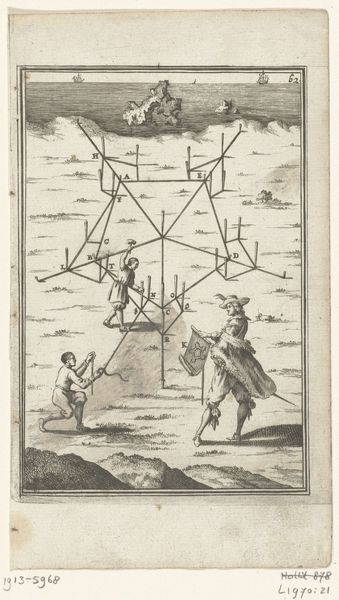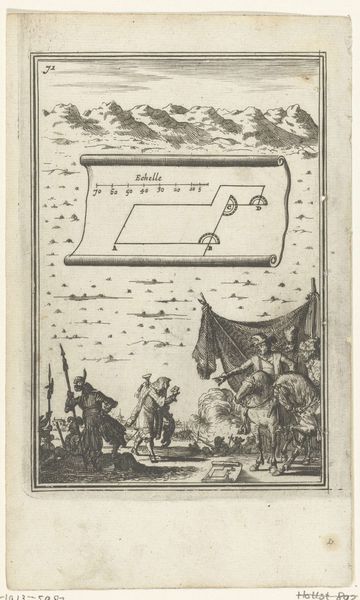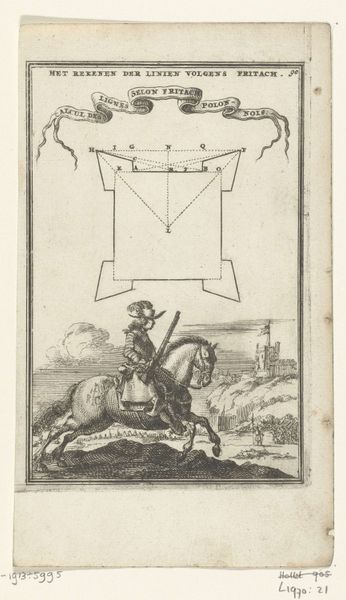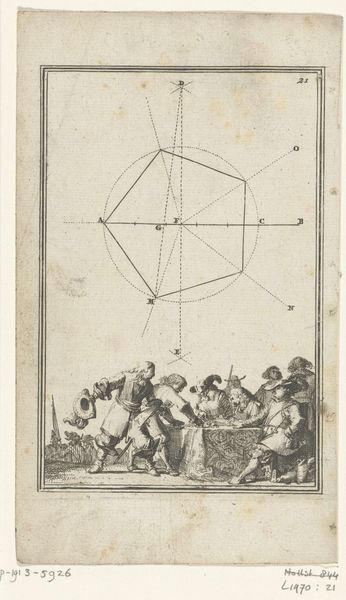
Illustratie voor 'Den Arbeid van Mars' van Allain Manesson Mallet 1672
0:00
0:00
print, engraving
#
baroque
# print
#
old engraving style
#
history-painting
#
engraving
Dimensions: height 186 mm, width 110 mm
Copyright: Rijks Museum: Open Domain
Editor: Here we have a rather curious engraving, "Illustration for 'The Work of Mars'" by Romeyn de Hooghe, dating back to 1672. The top half features geometric instruments, while the bottom half teems with a chaotic battle scene. It's...bizarre, almost like two unrelated images mashed together. What sense can we make of this strange combination? Curator: It’s tempting to see these “unrelated images” as distinct elements. However, thinking about the sociopolitical context in which this image was produced can bridge them. Consider the book itself – Allain Manesson Mallet’s work would have been studied and put to use. What sort of readership are we to imagine? Editor: I'd guess military strategists and…maybe the aristocracy? People interested in the "science" of warfare and its practical applications. Curator: Exactly. Now look at the instruments again: devices for measurement, calculation, perhaps even aiming artillery. Below them, we see not just a generic battle but figures of power directing events. It suggests war as a calculated activity. Does that interpretation shift how we see the whole print? Editor: Yes, absolutely! The geometric instruments represent the calculated aspects of warfare, and that makes the seemingly chaotic battle scene less random – the print presents war as a kind of applied science! But does idealizing warfare through technical representations affect its perception by, say, political elites? Curator: A powerful point. The engraving certainly lends an air of detached precision, possibly sanitizing war for its patrons and practitioners. We’re also encouraged to see the world in mechanical and mathematical terms. The printing press played a crucial role in shaping, disseminating, and perpetuating the world as something quantifiable for exploitation. Editor: I see, presenting war as something predictable almost...erases the messy reality. I wouldn’t have thought about the printing press as helping promote that erasure. That is very insightful, thank you. Curator: And thank you! Analyzing art as embedded within its socio-historical context often yields unexpectedly revealing narratives.
Comments
No comments
Be the first to comment and join the conversation on the ultimate creative platform.
